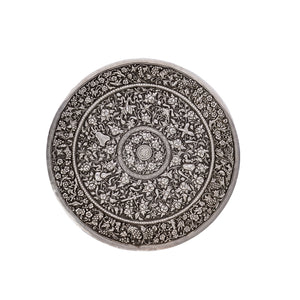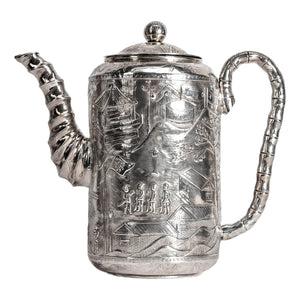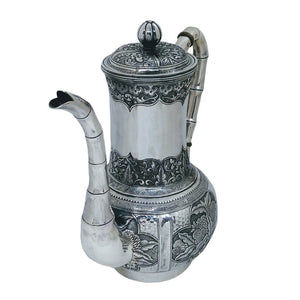Chinese tradesmen began to settle in Malaya in the 18th Century. The tradesmen married Malay women and formed communities or settlements, adopting a mixture of Malay and Chinese customs. The descendants of these mixed marriages are known as Peranakans. Unique silver items were created for the Peranakan community by local Chinese silversmiths which were a fusion of the two cultures. Silver objects were made in Malay and Javanese forms but were ornamented with Chinese symbols, grotesque figures, animals and Chinese flowers and trees. Objects included belt buckles, pillow ends and jewellery. Betel sets, jugs and ewers were also made, but are rarely seen today. Peranakan silver from the 18th century and early 19th century is very rare. Most of the objects seen today were made in the late 19th and early 20th century. This was the heyday of Peranakan silver production, coinciding with the era of British rule. It is interesting to compare Peranakan porcelain with Straits silver. The porcelain was created during the same period and intended for domestic use. It is bright and playful, featuring Chinese mythical figures and floral designs.


